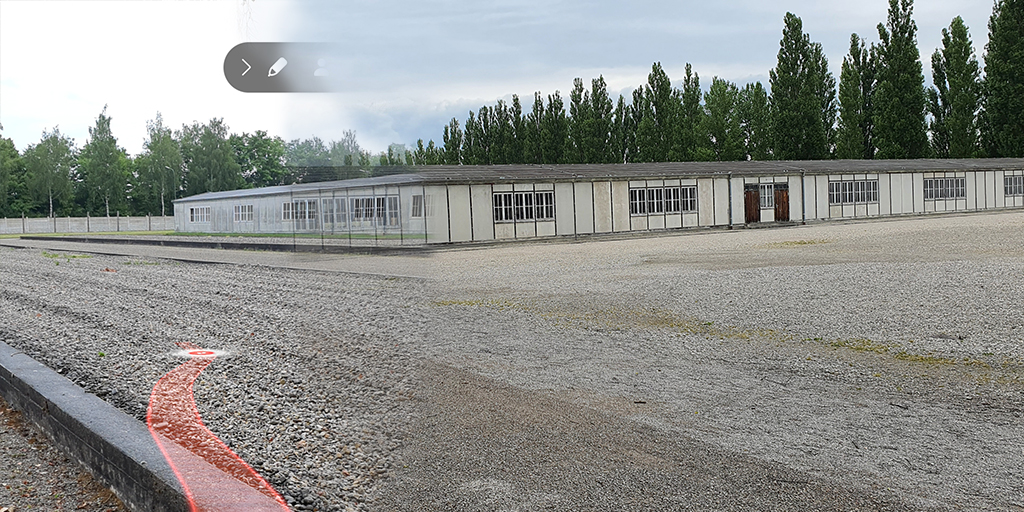
Centralising the Human in Digital Humanities Methods
by Dr Victoria Grace Richardson-Walden
It has always been a challenge for researchers to capture ‘collective memory’. As Holocaust memory becomes more digital, this aim becomes even harder. Here, our Lab Director, Victoria Grace Richardson-Walden, introduces the approach we’ve adopted in designing a methodology to record content for our groundbreaking ‘living database-archive’.
The idea that digital Holocaust memory is an entanglement between human and non-human actancy has always been central to my research. (I use actancy rather than agency to acknowledge a material reverberation across organic and non-organic entities without suggesting things make conscious decisions that could be conceived as ‘agency’.)
So it’s no surprise that my attempt to answer the question ‘how can we capture this collective memoryscape so that we can study it?’ initially aimed to connect people and computational technologies.
Following the online discussions I held during the Covid-19 Pandemic and the subsequent participatory workshops that led to the development of a series of recommendations reports, I felt an urgency to archive digital Holocaust memory practice.
I opted for digital ‘walkthroughs’ as a method of recording the projects in themselves – an established research methodology and well-practiced in the games industry and among fan communities. Walkthroughs are simply video recordings usually following a user’s experience of the technology – for example, an app or VR experience at memorial sites.
It would be vital to retain a constant format to make large-scale file migration, updating and access easier. However, just recording the projects did not feel enough – especially as one of the criticisms that I heard from within Holocaust organisations was a frustration with academics being too quick to criticise their digital outputs without engaging in dialogue with them.
[montage is] the dismantling and re-composition of everything.
At best, this could miss the production constraints they faced. At worst it could lead to false assumptions.
Such critiques dismiss the significance of the complex networks of humanness that inform what we see at any digital interface. With this in mind, it was not the user’s experience I primarily wanted to capture, but rather a three-way dialogue between producers (curators, developers, designers, educators); the technology; and myself as a user and interviewer.
However, during the pilot, I encountered several issues:
- Many interviewees quickly pushed aside the technology to discuss big issues like infrastructure, funding, interdisciplinary disputes and resources.
- At some Holocaust memorial sites and museums, staff had actively ignored the Content Management Systems (the interface I would have chosen to record them interacting with) since the original loading of content under the supervision of their design and/or technical partners, due to lack of confidence, time, and/or digital literacies.
- We couldn’t record walkthroughs of projects that were no longer accessible, but there are people currently working in Holocaust memory and education who were involved in some of the earliest digital projects. How to maintain a record that captures their contributions?
- At times, the walkthroughs imposed particular narratives on interviews, focusing interviewees’ attention on micro features rather than their production or distribution journeys.
- Some people were involved with multiple digital projects and naturally wanted to jump between them in their interview, but the walkthrough method constrained them to one project at a time. This also meant having to record several interviews with each of them.
Speaking with the technology hampered the natural flow of interviews, whilst also highlighting severe issues regarding digital literacies and problems maintaining digital projects across the sector. These issues exposed how central humanness was to digital Holocaust memory.
To refine the methodology, I turned to a theorist who has influenced my research from its very beginning: Georges Didi-Huberman (2018) and his definition of montage:
‘[montage is] the dismantling and re-composition of everything’.
For me, a montage-informed approach meant acknowledging the individual players in the development of digital Holocaust memory projects. It meant dismantling the idea of any ‘digital project’ as a coherent object of study and understanding them instead as constellations of actancy, both as projects in themselves and with reverberations across and between projects.
This new approach led to me recording everything separately: my experience of the project as a digital walkthrough, and then audio or AV interviews with those involved in its production and dissemination.
These elements would then be ripe for re-composition through the design of our living database-archive. On our new platform, currently in development, Holocaust memory and education professionals, their creative partners, and academics will not only be able to access our re-composed digital montages that present the complex entanglement that is digital Holocaust memory, they will also have the opportunity to produce montages themselves.
More on the details of this will come in a future blog dedicated to the living database-archive. Follow us on social media (Facebook, LinkedIn, Bluesky and Instagram) and WordPress for updates.
Want to know more?
Find out more about how we are building the new Landecker Digital Memory Lab.
Read some earlier reflections on the possibilities of archiving online commemoration practice.